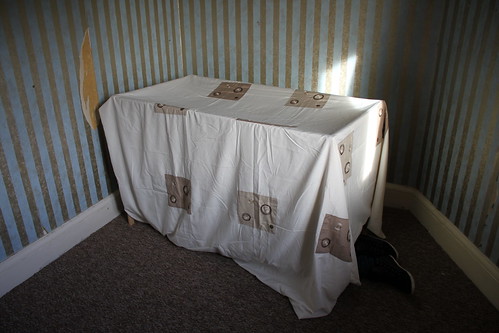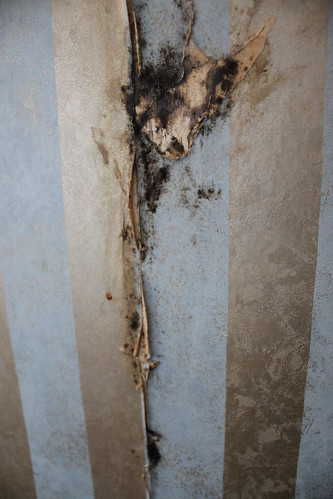My initial reaction to the cot room was that it was creepy, purely due to my prior knowledge of the use of the space. The room doesn’t have heating, the wall papers peeling and there is only a cot inside, not forgetting the mould, I fear for my health. How long does it take for black mould to kill you?
The thought of anyone, let alone a child, being expected to live in this space (I wouldn’t call it a bedroom) is despicable. This led me to thinking about how our bedrooms are our sanctuary as Heathcote dictates “of all the rooms in our house, it remains the most intimate, the most private and the most precious” ((Heathcote, Edwin. (2012). The meaning of home. London, Frances Lincoln Ltd.)) but when we’re children this isn’t true as our parents come and go as they please, they choose the furniture, and they choose what’s no longer wanted. The room isn’t the child’s, but what the parent decides it’s going to be, pink for a girl, blue for a boy, dinosaurs, princesses or spaceships, most of this is chosen before the child is even born, so how can they call it their own?
I was lead to consider how a child makes their own spaces, yes, that’s right I made my own den in the cot room. I began by simply lying beneath the cot but it felt too exposed I felt more trapped than hidden, almost imprisoned which linked well with the houses purpose. But not the sense I was aiming for so I decided to hide more thoroughly (well if I was a child I’d believe I was better hidden) I achieved this by putting a bed sheet over the crib and shimmying, not very elegantly, back underneath and all of a sudden it was a different atmosphere as if I couldn’t see out they couldn’t see in. I felt shielded protected and with just my feet poking out,
hidden as if I had gathered some power from this place which I had created. I remember having that same feeling when I was young after putting four chairs into a square and stealing the bedding off of my parent’s bed to cover it. They don’t know if your there or if you’ve left this den for them to discover as people realised when entering the cot room, as I managed to pull my feet under the crib with me (which was surprisingly comfortable), people were then unsure as to whether I had left or not. I let them know by grabbing their ankles, muhahahahaha; Conan was wise and asked from the door if I was still within my room.
After my return to the real world from my den I looked back on my initial feelings of being trapped within the cot and based on its and the rooms aesthetics it made me think of prison. It made me think of how people within their cells try to claim it as their own, even though it very much isn’t, this can be linked to children and when they make dens. I also thought children and prisoners linked through the fact they are both trapped. A child in the sense this is their family and they are to remain with them till they are old enough to look after themselves (except in extreme circumstances). However for prisoners it is a form of punishment in order to act as a deterrent for future bad behaviour, but after reading John Podmore’s “Out of sight, out of mind Why Britain’s prisons are failing.” ((Podmore, J. (2012) Out of sight, out of mind Why Britain’s prisons are failing. London: Biteback Publishing Ltd.))
After reading this I realised this isn’t always the case and that some criminals become complacent in prison, even continuing their illicit activities from behind bars, their complacency however is similar to that of most abused and neglected children. These children don’t accept what is happening is wrong and put their heads down and do their “time” without complaint, even twisted into believing they deserve it. And I wonder could we force are audience to feel trapped? Force them into thinking if their quiet and do as their told they’ll leave without any harm done to them? Put them in a place of stress forcing them out of their comfort zones and into the mode of what the house is used for, pretending to be a house of neglect and abuse?
